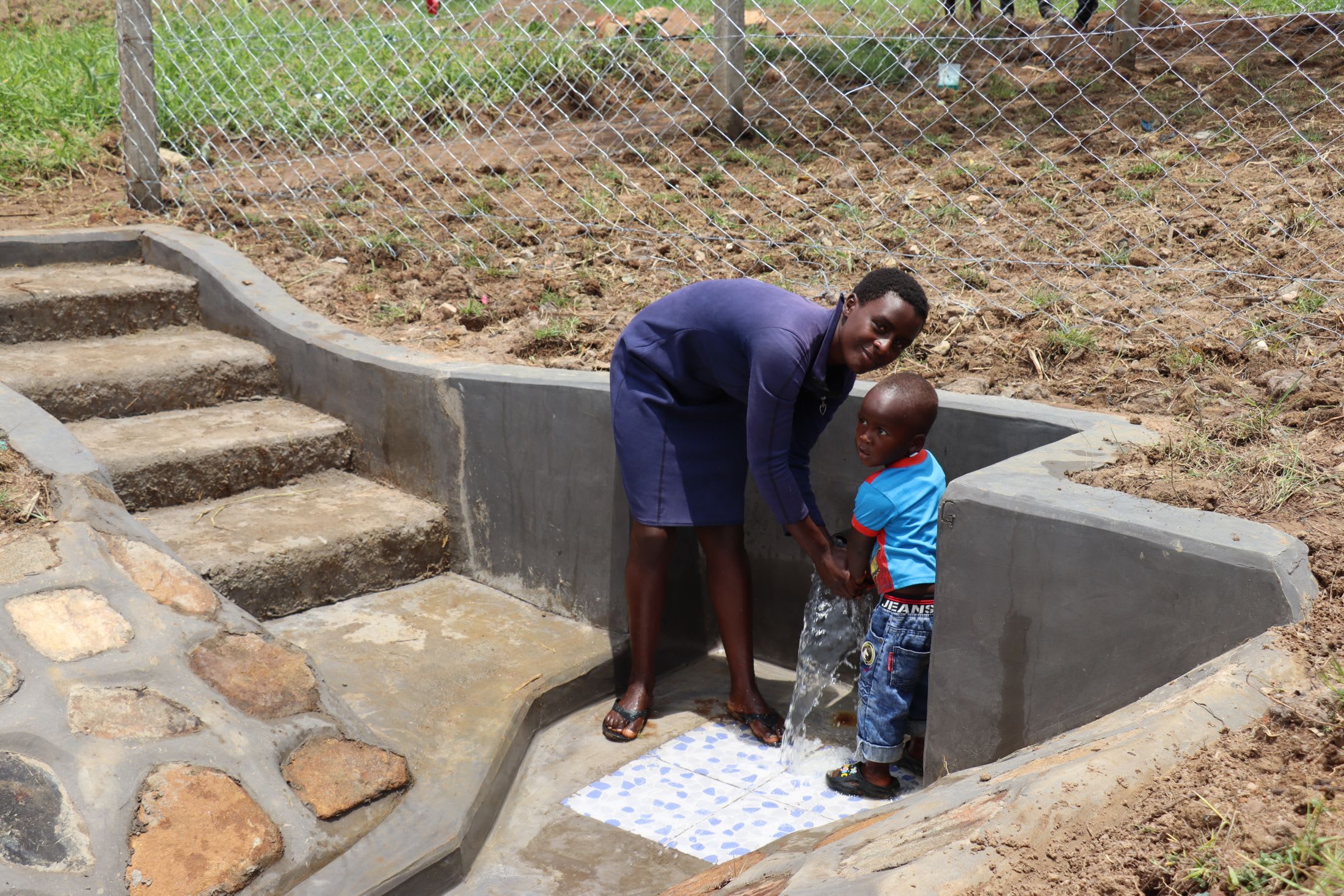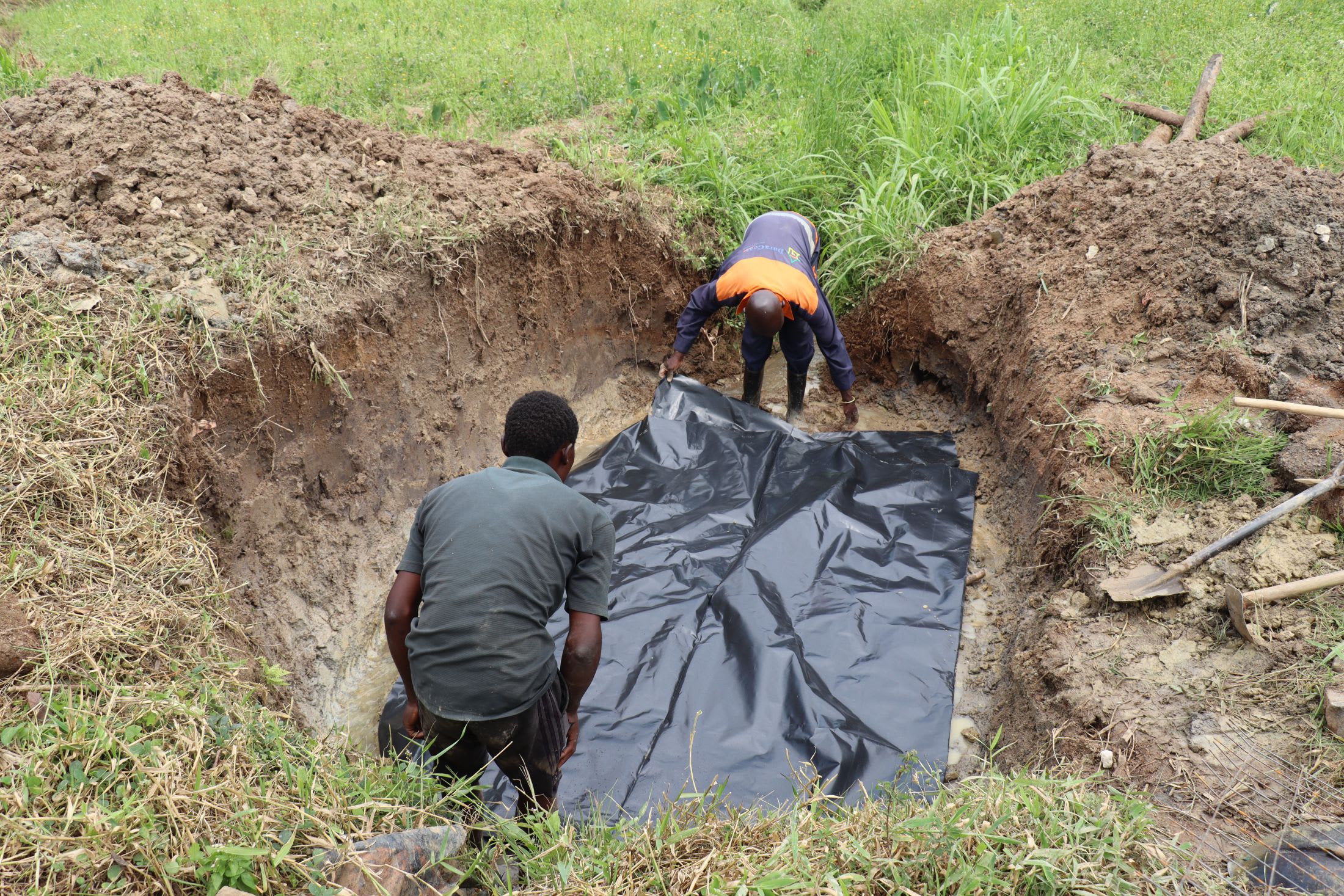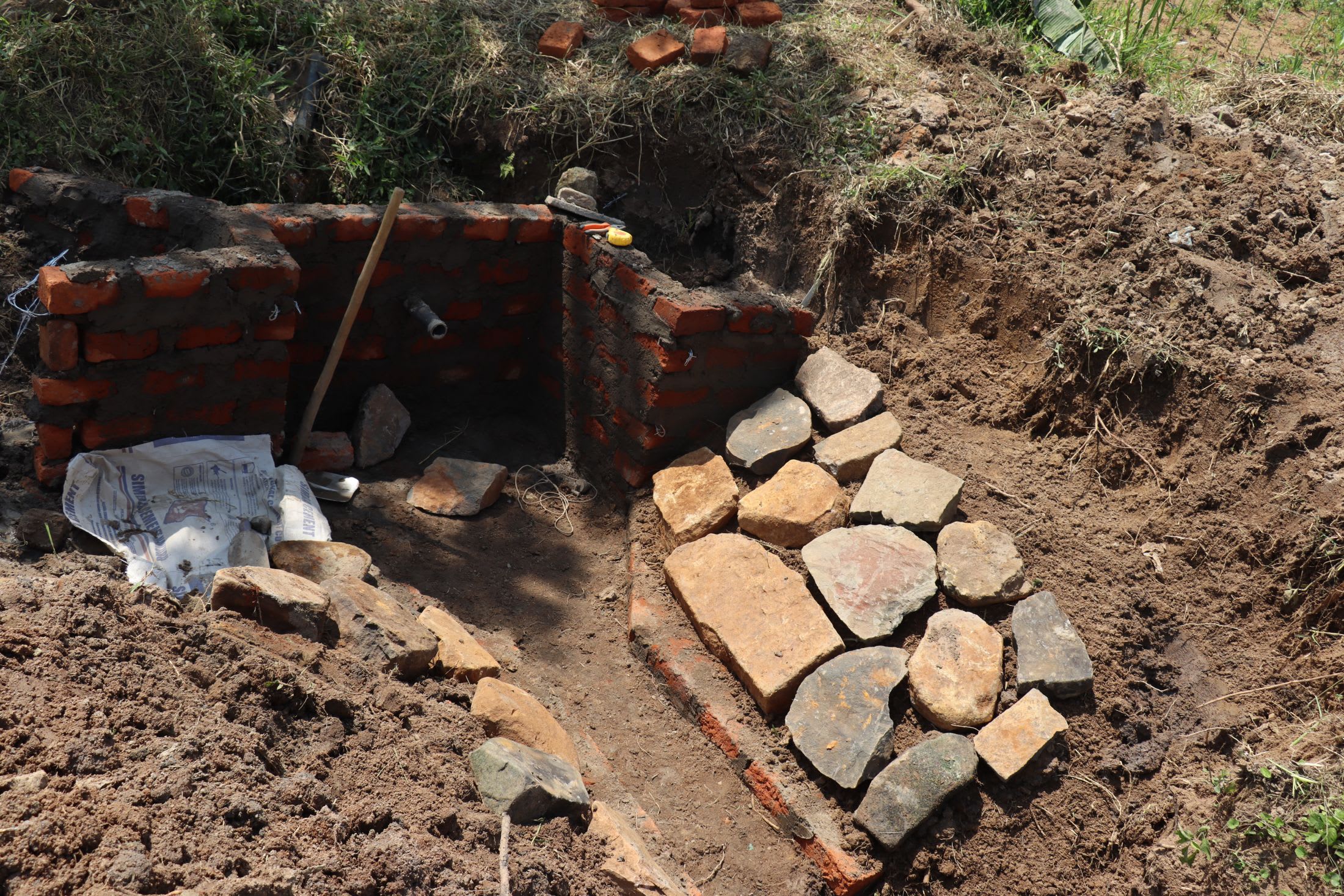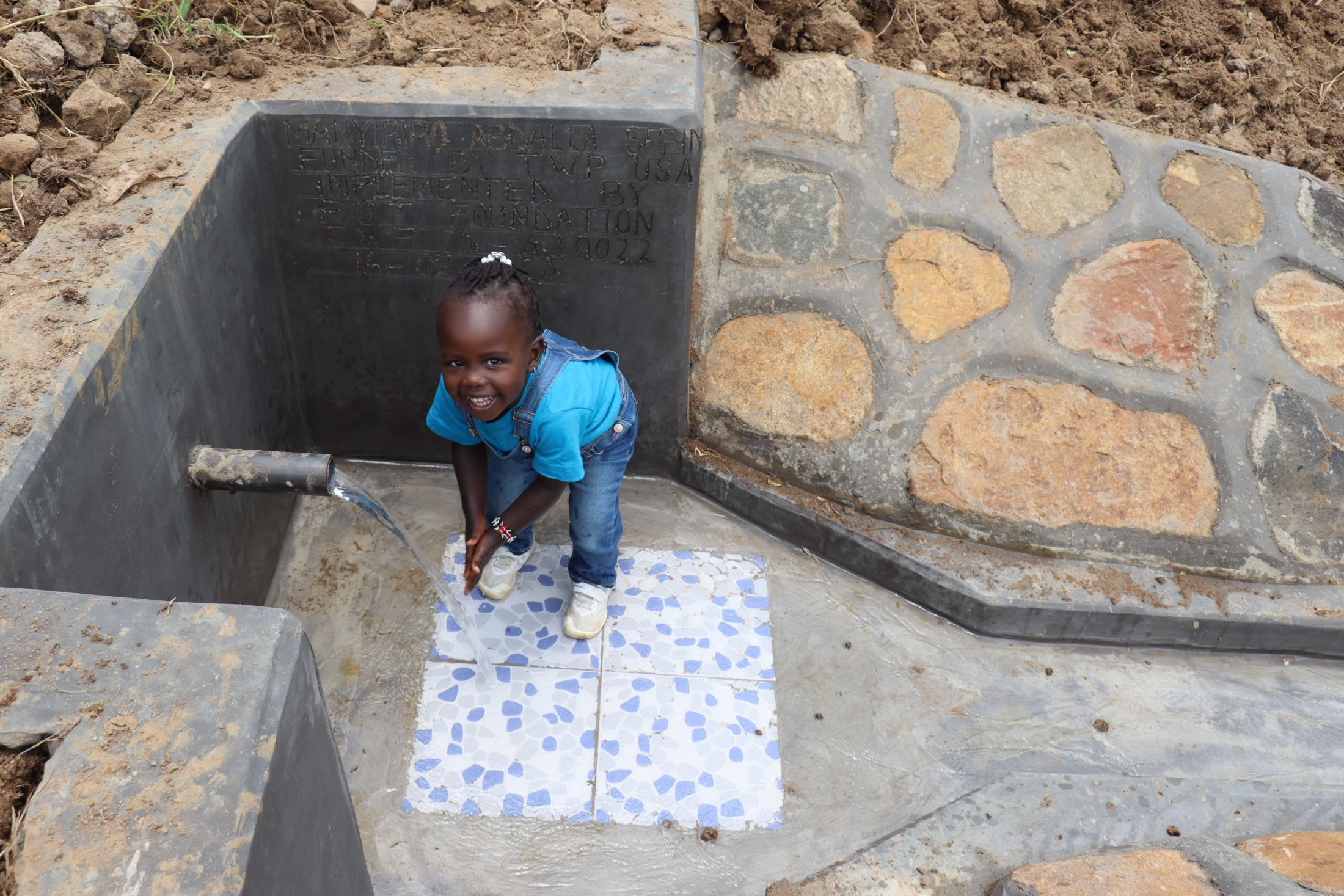The 700 people who live in Efundula Community struggle to access sufficient water to meet their daily needs. Their primary water source is an unprotected spring that is open to contamination and doesn't drain properly. Its poor condition leaves community members vulnerable to contracting waterborne diseases.
"When it rains, we lack water for drinking because it's usually too dirty. I also fear stepping in water to fetch water because of dangerous animals (see more about liver flukes below) that bite [me] very painfully," said five-year-old Sharnice, shown below collecting water.

Community members report suffering from frequent cases of diarrhea, stomachache, headache, liver flukes, and typhoid from collecting and consuming the water.
"I am always treating typhoid and diarrhea because of drinking dirty water. I also spend the little coin I get on medication, which really affects my general well-being," said 28-year-old Beatrice Mong'ina, shown below collecting water from the spring.
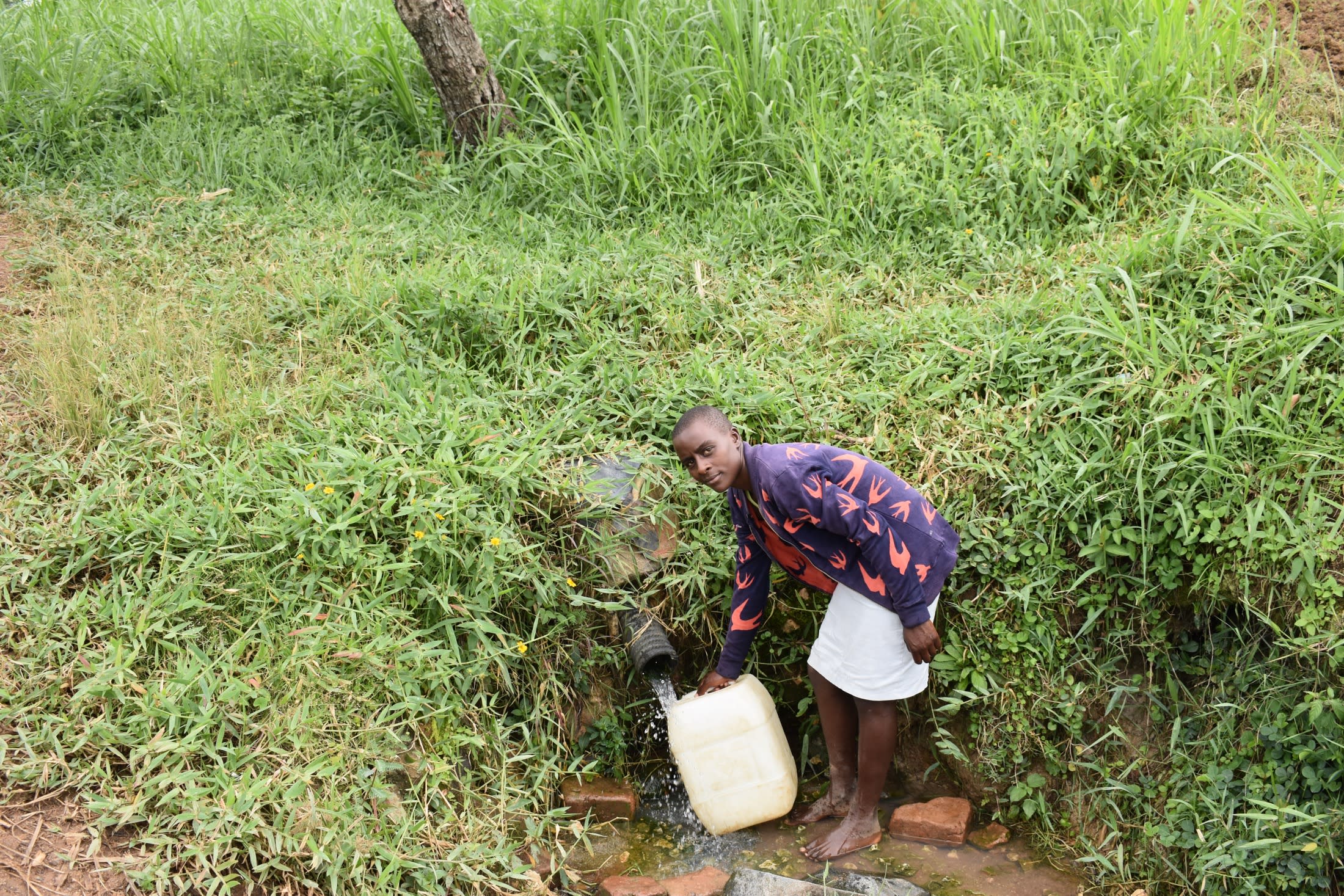
"Going for water normally wastes a lot of my time because of the long queues at the water point," said Beatrice. As Beatrice mentioned, illnesses from the dirty water are not the only issues the people in Efundula face.
"The users also waste a lot of time queueing for water, thus affecting their income-generating activities. [There is] overcrowding and conflicts, which usually lead to fights," said field officer Jacqueline Kangu.
Understandably, wasting time at the waterpoint is frustrating for everyone. Without the benefit of clean water access, life for children and adults like Sharnice and Beatrice is tiresome and discouraging.

The protection of the spring will enable people to save time and energy to focus on their most important daily tasks and reduce the amount of needless suffering because the water they collect will be safe to consume.
"Abdallah Spring is a very good spring that, if protected, would save this [large] population that it serves from the multiple water-related challenges they are facing today," concluded Jacqueline.
The Proposed Solution, Determined Together...
At The Water Project, everyone has a part in conversations and solutions. We operate in transparency, believing it benefits everyone. We expect reliability from one another as well as our water solutions. Everyone involved makes this possible through hard work and dedication.
In a joint discovery process, community members determine their most advantageous water solution alongside our technical experts. Read more specifics about this solution on the What We're Building tab of this project page. Then, community members lend their support by collecting needed construction materials (sometimes for months ahead of time!), providing labor alongside our artisans, sheltering and feeding the builders, and supplying additional resources.
Water Access for Everyone
This water project is one piece in a large puzzle. In Kenya, Sierra Leone, and Uganda, we're working toward complete coverage of reliable, maintained water sources that guarantee public access now and in the future within a 30-minute round trip for each community, household, school, and health center. One day, we hope to report that this has been achieved!
Training on Health, Hygiene & More
With the community's input, we've identified topics where training will increase positive health outcomes at personal, household, and community levels. We'll coordinate with them to find the best training date. Some examples of what we train communities on are:
- Improved hygiene, health, and sanitation habits
- Safe water handling, storage & treatment
- Disease prevention and proper handwashing
- Income-generation
- Community leadership, governance, & election of a water committee
- Operation and maintenance of the water point
Chlorine Dispensers
Installing chlorine dispensers is an important piece of our spring protection projects. Protecting a spring provides community members with an improved water source, but it doesn’t prevent contamination once the water is collected and stored. For example, if the water is clean and the container is dirty, the water will become contaminated.
We ensure that each chlorine dispenser is filled with diluted chlorine on a consistent schedule so that people can add pre-measured drops to each container of water they collect. That way, community members can feel even more confident in the quality of their water.

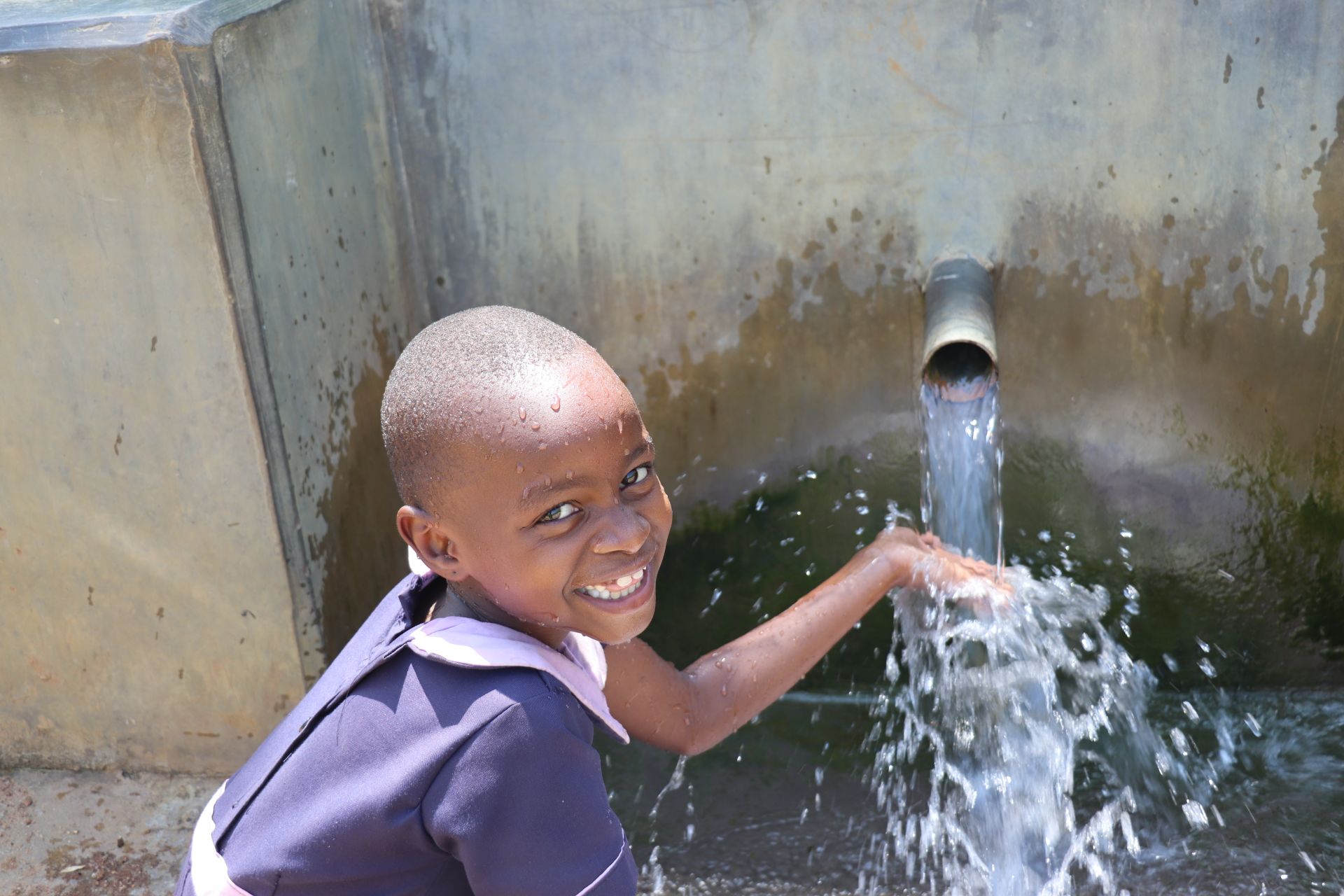
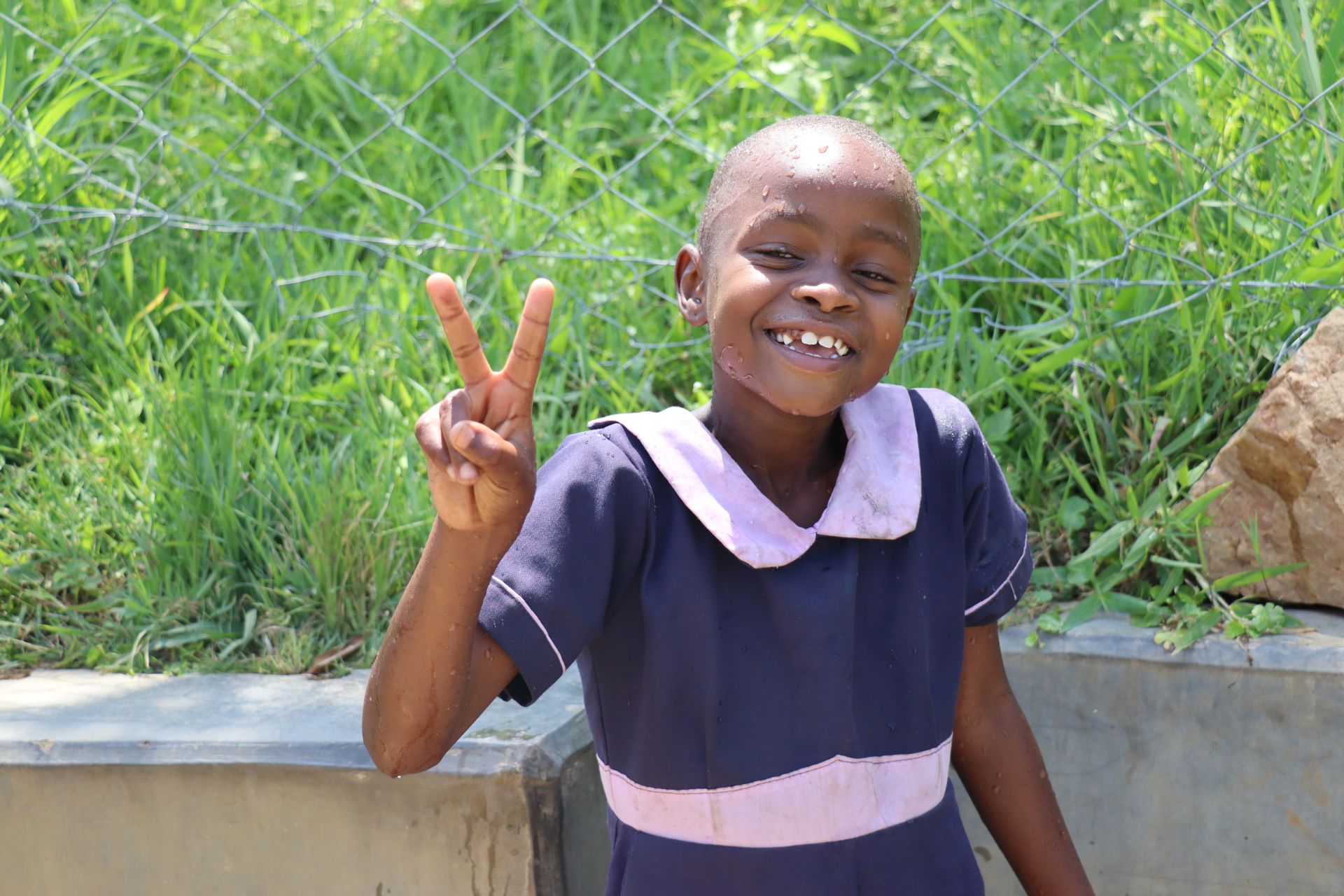

 Protected Spring
Protected Spring
 Rehabilitation Project
Rehabilitation Project













